

Sun Valley
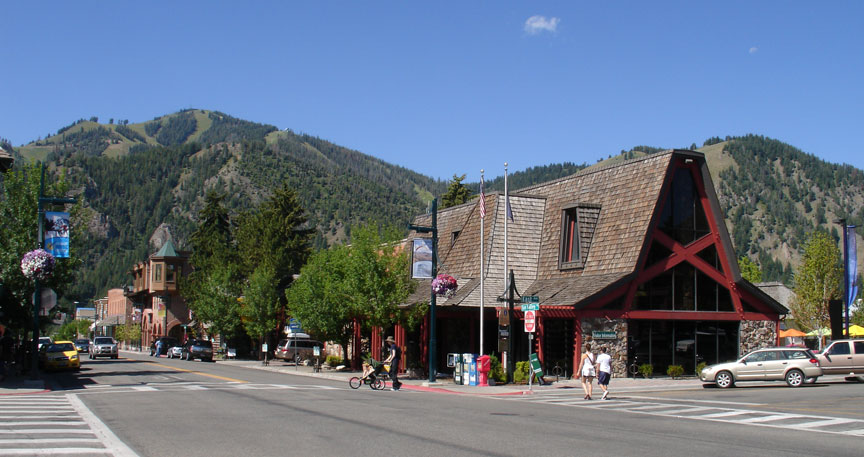
Sun Valley
Sun Valley is a resort city in Blaine County in the central part of the U.S. state of Idaho, adjacent to the city of Ketchum. Tourists from around the world enjoy its skiing, hiking, ice skating, trail riding, tennis, and cycling. The population was 1,427 at the 2000 census. Few of its residents stay year-round, and most come from major cities like Seattle, Los Angeles, San Francisco, and more distantly Chicago and New York City. The elevation of Sun Valley (at the Lodge) is 5920 feet (1804 m) above sea level. The area is served by Friedman Memorial Airport in Hailey, approximately 15 miles (24 km) south. Visitors to Sun Valley are relatively close to the Sawtooth National Recreation Area, accessed over Galena Summit on Highway 75, the Sawtooth Scenic Byway.
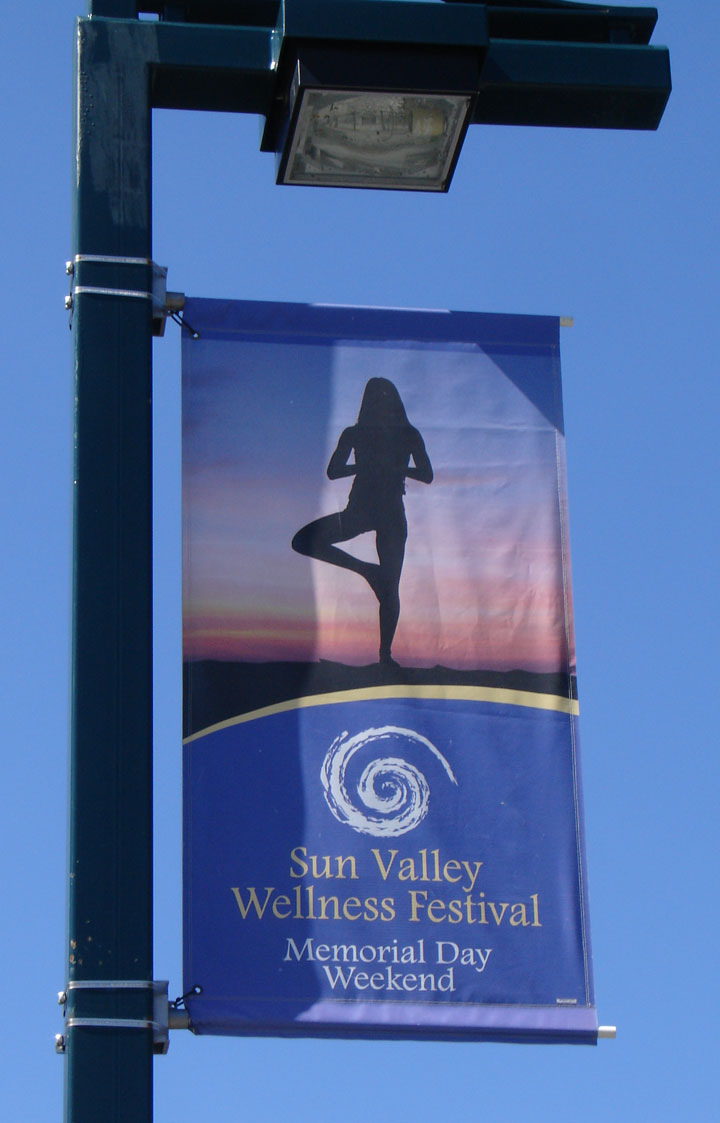
Among skiers, the term "Sun Valley" refers to the alpine ski area, which
consists of Bald Mountain, the main ski mountain, and Dollar Mountain, which is
geared toward novice and lower intermediate skiers. Bald Mountain, or "Baldy,"
has a summit of 9150 feet (2789 m) and a vertical drop of 3400 feet (1036 m).
With its abundance of constant-pitch terrain, at varying degrees of difficulty,
coupled with its substantial vertical drop and absence of wind, Baldy has often
been referred to as the best single ski mountain in the world. The treeless
"Dollar" at 6638 feet (2023 m) has a moderate vertical drop of 628 feet (191 m).
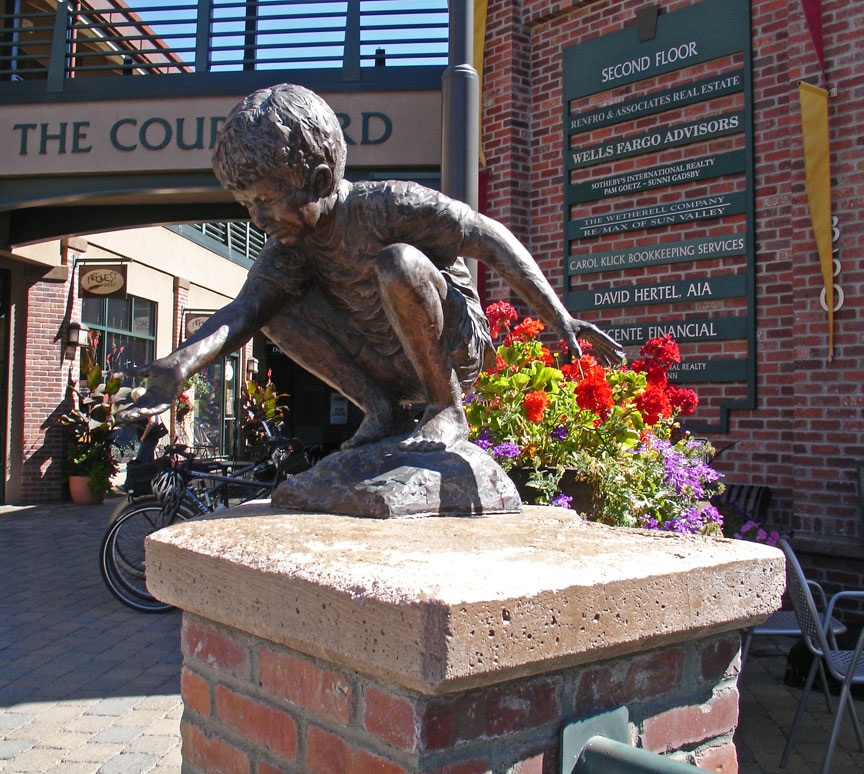
The term "Sun Valley" is used more generally to speak of the region surrounding
the city, including the neighboring city of Ketchum and the valley area winding
south to Hailey. The region has been a seasonal home to the rich, famous, and
powerful, including Mats Wilander, Walter Annenberg, Adam West, Ernest
Hemingway, Tom Hanks, Steve Miller, Demi Moore, Peter Cetera, Clint Eastwood,
Bruce Willis, Ashton Kutcher, Richard Dreyfuss, Steve Wynn, Mohamed al-Fayed,
Barbara Kent, John Lewis, and Tony Robbins.
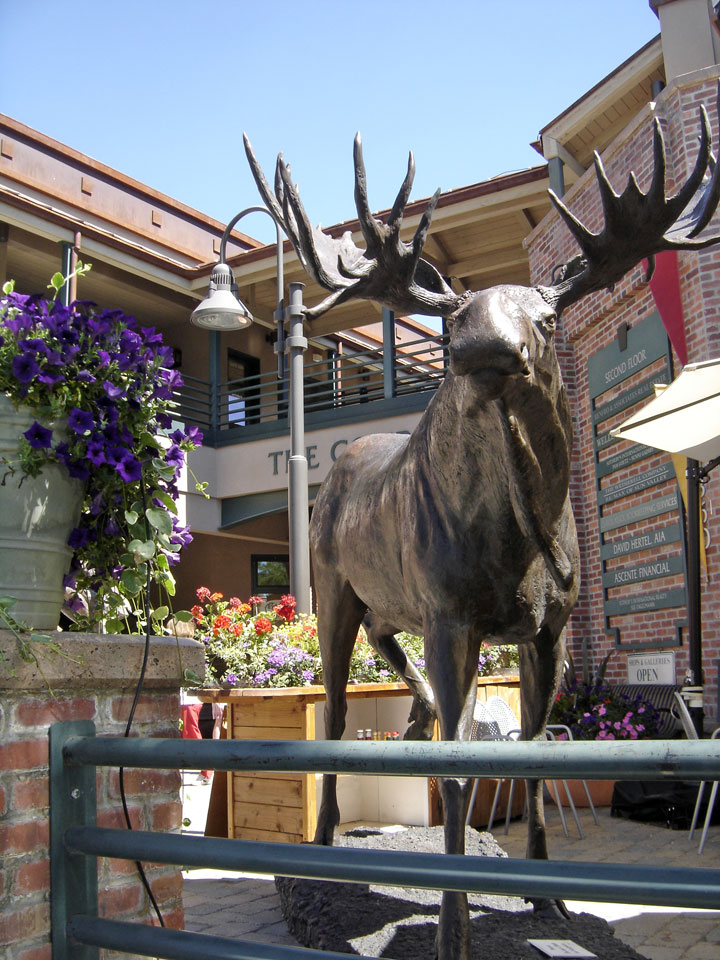
The first destination winter resort in the United States was developed by W.
Averell Harriman, the chairman of the Union Pacific Railroad, primarily to
increase ridership on passenger trains. The success of the 1932 Winter Olympics
in Lake Placid, New York, spurred an increase in participation in winter sports
(and alpine skiing in particular). A lifelong skier, Harriman determined that
America would embrace a destination mountain resort, similar to those in the
European Alps, such as St. Moritz. During the winter of 1935-36, Harriman
enlisted the services of an Austrian count, Felix Schaffgotsch, to travel across
the western U.S. to locate an ideal site for a winter resort. The Count toured
Mount Rainier, Mount Hood, Yosemite, the San Bernardino Mountains, Zion National
Park, Rocky Mountain National Park, the Wasatch Mountains, Pocatello, Jackson
Hole, and Grand Targhee areas. Late in his trip and on the verge of abandoning
his search, he was steered to the Ketchum area in central Idaho. A U.P. employee
had mentioned that the rail line to Ketchum had cost the company more money for
snow removal than any other branch line.

Schaffgotsch was impressed by the combination of Bald Mountain and its
surrounding mountains, adequate snowfall, abundant sunshine, moderate elevation,
and absence of wind, and selected it as the site. Harriman visited several weeks
later and agreed. The 3,888-acre (15.73 km2) Brass Ranch was purchased for about
$4 per acre and construction commenced that spring; it was built in seven months
for $1.5 million.

Pioneering publicist Steve Hannigan, who had successfully promoted Miami Beach,
was hired and named the resort "Sun Valley." (Count Schaffgotsch returned to
Austria and was killed on the Eastern Front during World War II.)
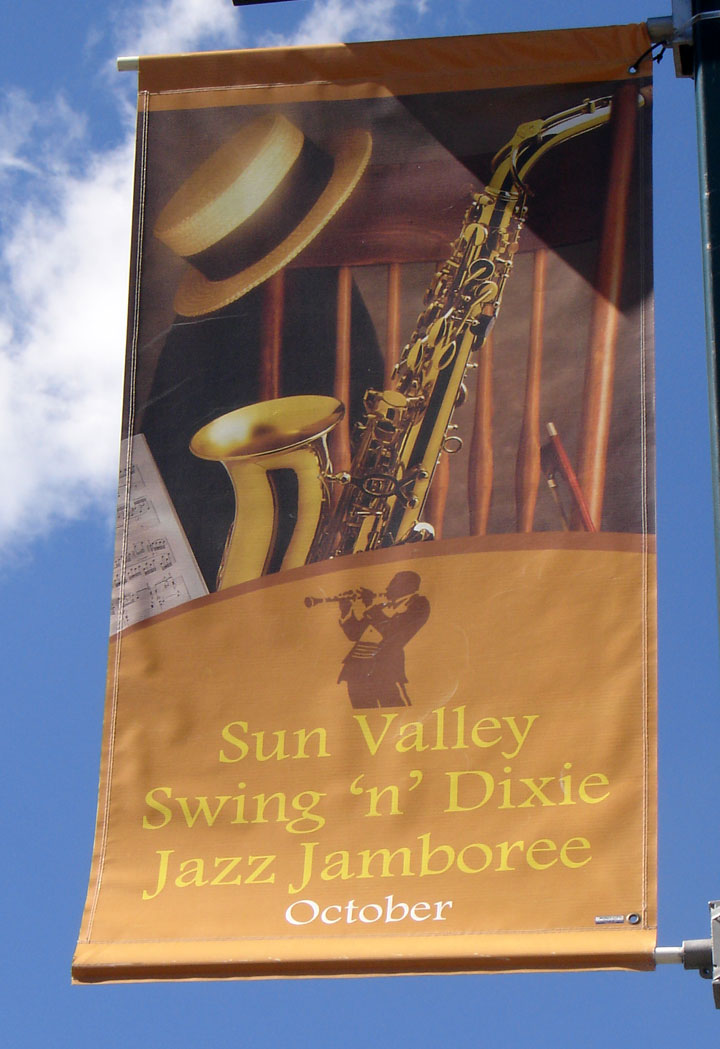
The centerpiece of the new resort was the Sun Valley Lodge, which opened in
December 1936. The 220-room, X-shaped lodge's exterior was constructed of
concrete, poured inside rough-sawn forms. The wood grain was impressed on the
concrete finish, which was acid-stained brown to imitate wood.
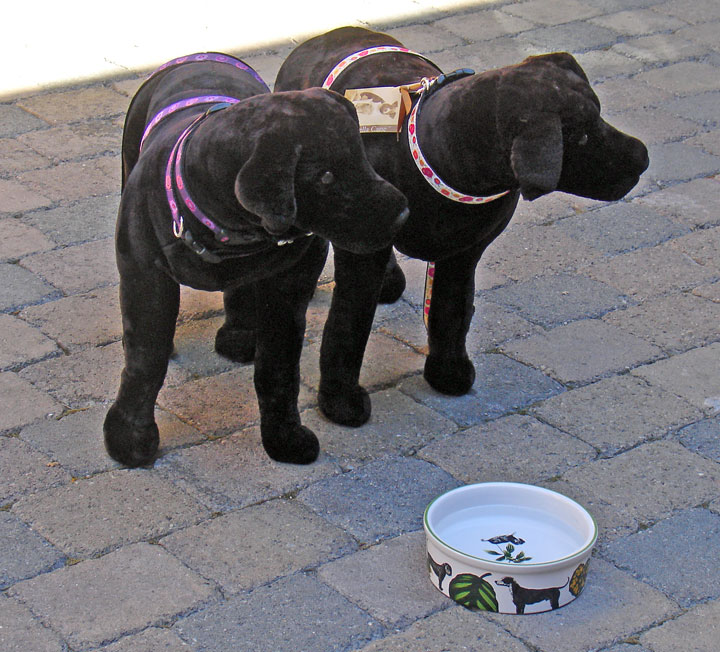
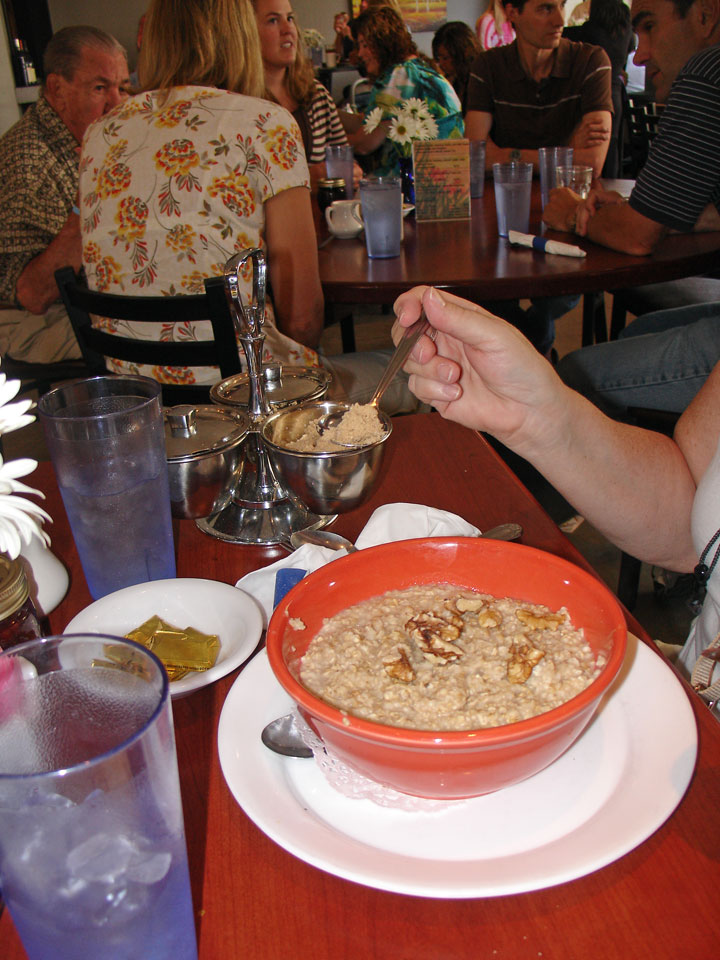
oat meal for breakfast
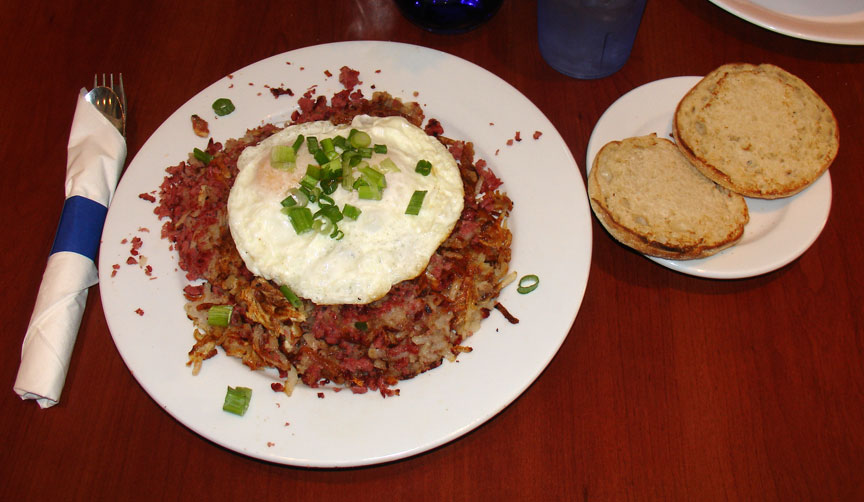
or corn beef hash with eggs and English muffin
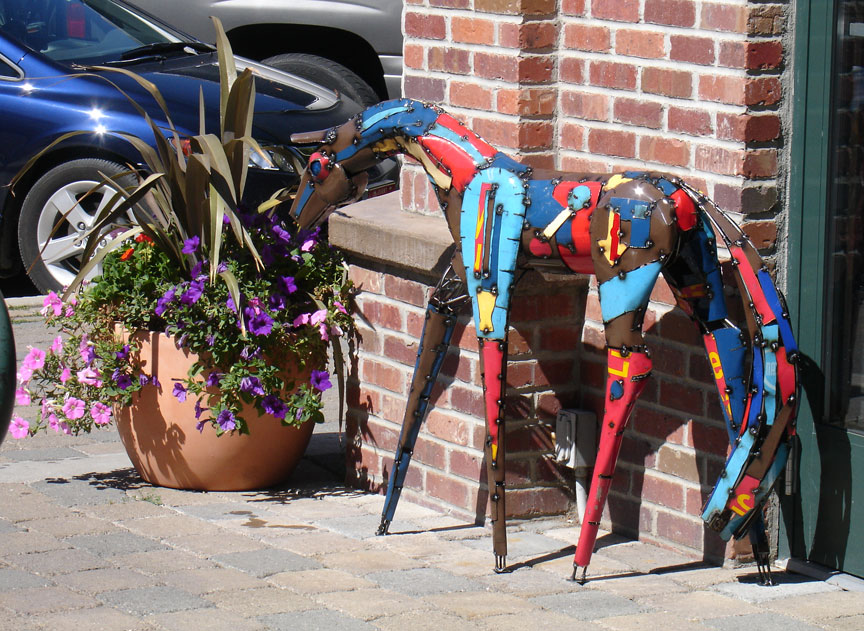
The Swiss-style Challenger Inn (now Sun Valley Inn) and village were also part
of the initial resort, opening in 1937. Hannigan wanted swimming pools at the
resort, "so people won't think skiing is too cold." Both the Lodge and the Inn
had heated outdoor swimming pools, circular in shape. Hannigan had the pools
designed this way, unique at the time, in the hope they would be widely
photographed, providing free publicity. It worked.
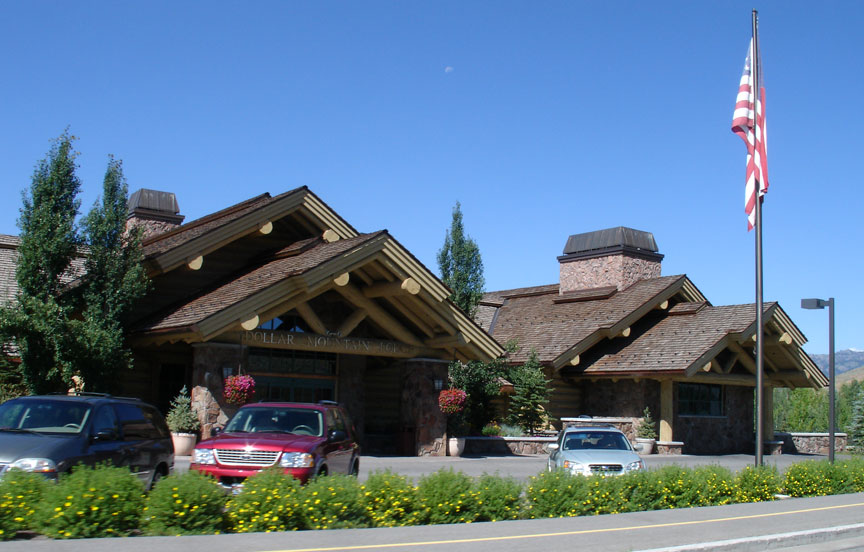
Dollar Mountain Inn
The world's first chairlifts were installed on the resort's Proctor and Dollar Mountains in the fall of 1936. (Proctor Mountain is northeast of Dollar Mountain). The chairlift design was adapted from banana loading equipment used on fruit ships in the tropics. The single-seat chairlifts were developed at the Union Pacific headquarters in Omaha in the summer of 1936. The chairlift went on to replace the primitive rope tow and other technologies used at ski areas at the time. The original Proctor Mountain Ski Lift is listed on the National Register of Historic Places.
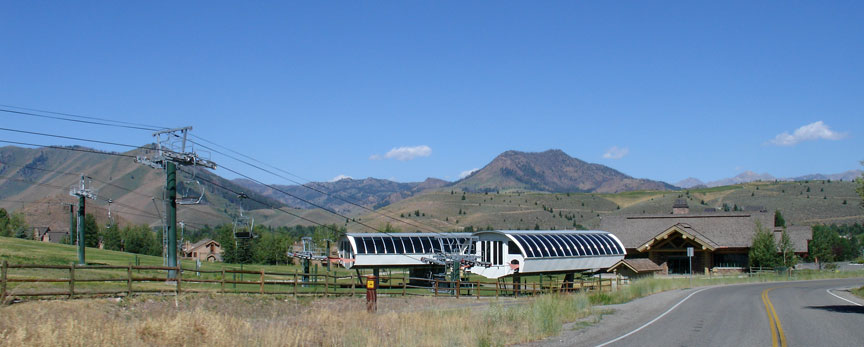
chair lift
While Bald Mountain was one of the reasons for the selection of the site, it was not initially part of the resort. The plan was to eventually develop it as a ski mountain, but sometime in the future. Alpine skiing was still in its infancy in America, and it was believed by management that there were not enough accomplished skiers to justify its development in 1936. But it was quickly realized by the resort's restless Austrian ski instructors that this fantastic mountain needed to be opened to the skiing public (and promoted) as soon as possible. The instructors had hiked up and skied down Baldy on their off days during the resort's first few seasons. These men were among the best skiers in the world, and had fled Austria just before it had come under control of the Nazis in 1938 (Anschluss).

moderate ski slopes
For Sun Valley's fourth season, three chairlifts (in series) were installed on Bald Mountain during the summer of 1939, in the River Run area, the northeast face of the mountain overlooking Ketchum and Sun Valley. Ski runs had been cut out of the forest during the summers of 1938-39. Friedl Pfeiffer, the new head of the ski school from St. Anton, Austria, wanted the lifts to go to the very top of the mountain, something that had yet to be done anywhere, even in Europe.
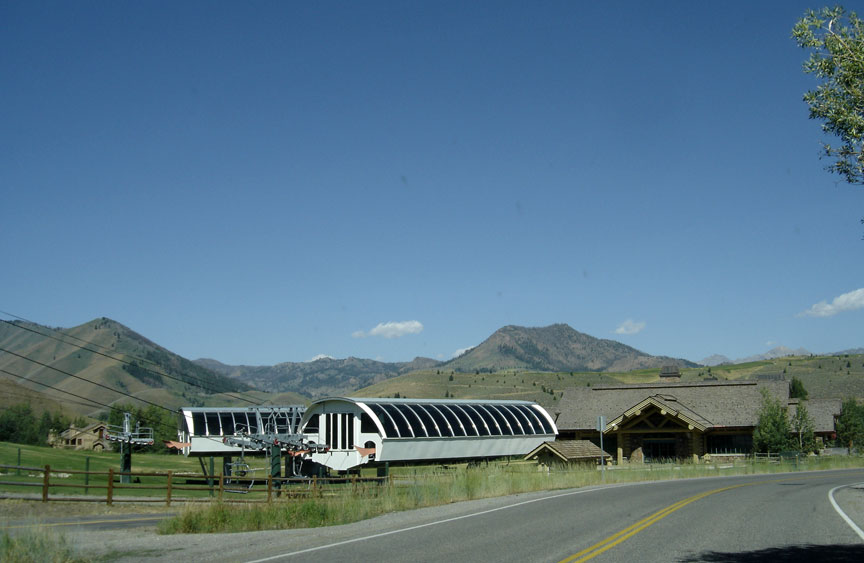
The loading point of the lowest chairlift (River) was on the Ketchum side of the
Big Wood River, at an elevation of 5750 feet (1752 m). The single chairs loaded
near the parking lot, then horizontally crossed the river (about eight feet
above the water) before ascending the mountain, gaining 600 vertical feet (183
m). The middle lift (Canyon) gained over 1300 vertical feet and unloaded at the
Roundhouse (a day lodge at 7700' (2347 m), built in 1939). The upper lift
(Ridge) also climbed over 1,300 vertical feet (396 m), unloading at just above
9000 feet (2743 m) AMSL. Its lift capacity was a mere 426 skiers per hour (7 per
minute). The three chairlifts that are in approximately the same lines today
(2006) are: River Run (quad), Exhibition (triple), and Christmas (quad). The
original lower single chairlift was replaced in the 1960s and the loading base
was moved across the river; a footbridge provides walking access from the
parking lot to the River Run base area.
Text from Wikipedia

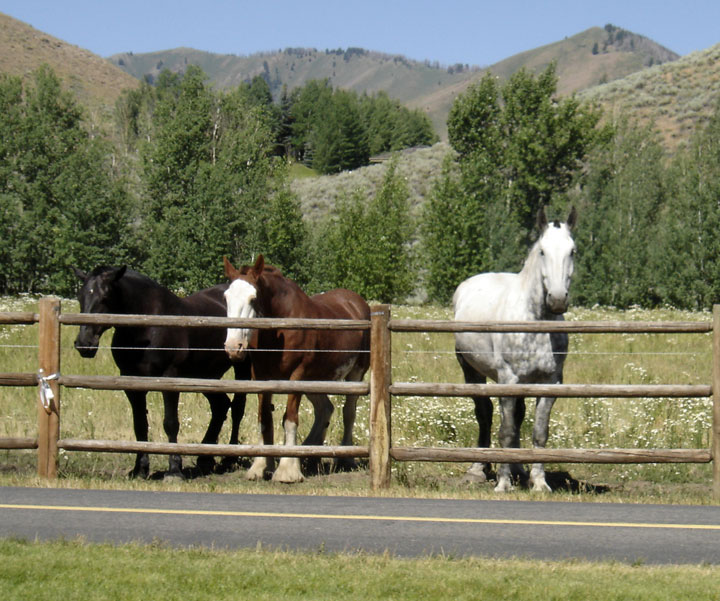
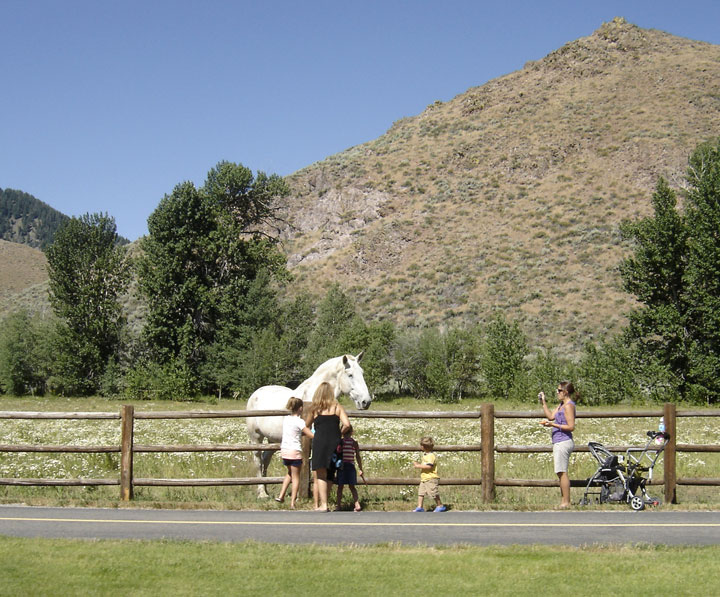
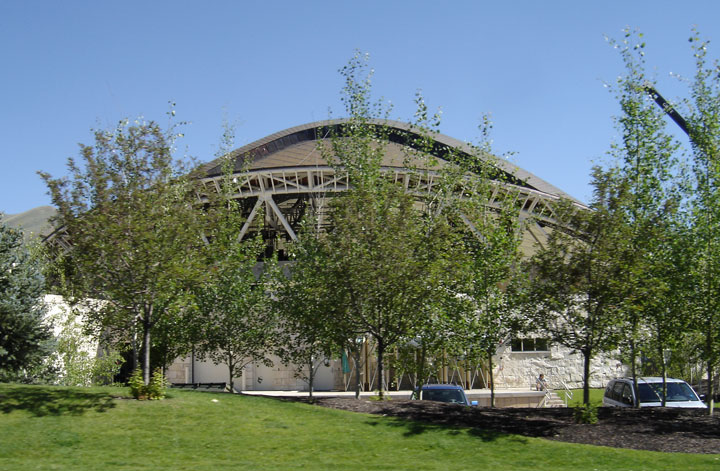
event center
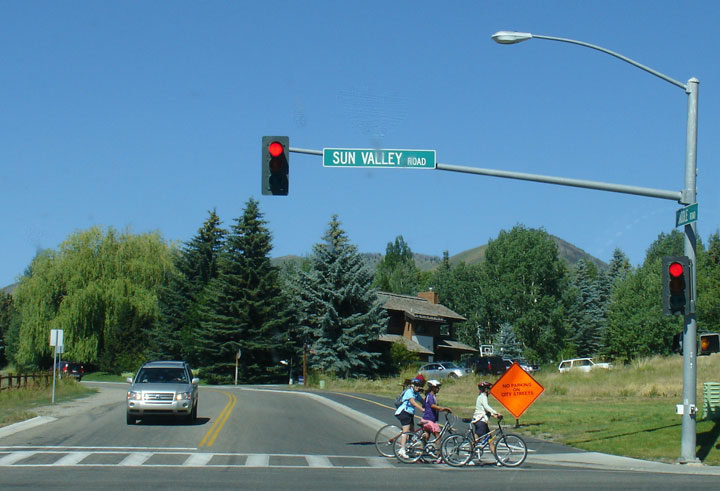
Sun Valley Road
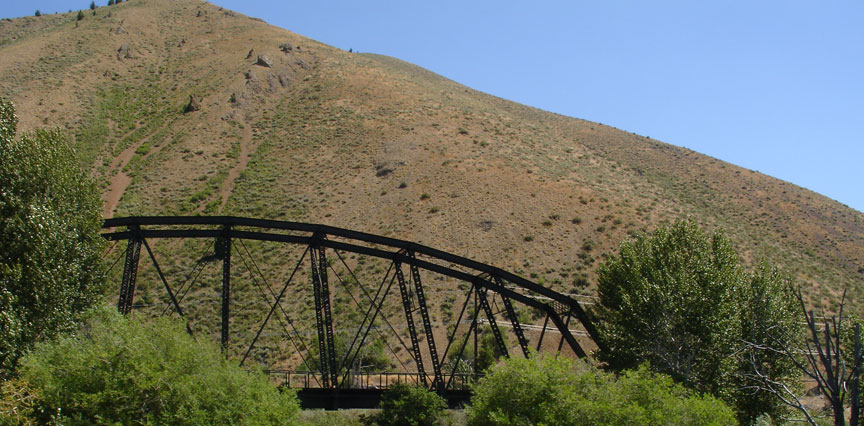
rail bridge on the line to Sun Valley